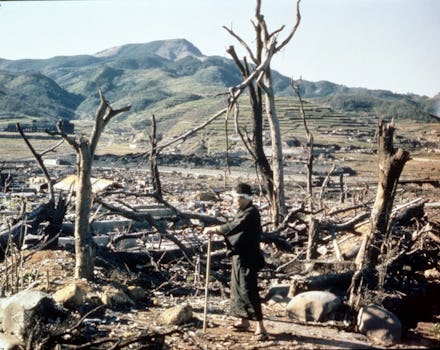The Untold Story of How Japanese Steel Workers Saved Their City From the Atomic Bomb

The story: On Aug. 9, 1945, Satoru Miyashiro lit fire to a cache of oil drums filled with coal tar. He also drastically changed the course of history.
Miyashiro was a steel mill worker in the city of Kokura, now present-day Kitakyushu, Japan, which sits on the country's southwest coast. On that morning, American B-29 bombers were flying toward Kokura carrying a second atomic bomb — the first had been deployed over Hiroshima a few days earlier, killing an estimated 135,000 people and destroying 6 square miles of the city.
Image Credit: Mipro
Miyashiro had heard from co-workers about the "new bomb" that destroyed Hiroshima. They had traveled through there on their way back to the steel mill. He believed his city would be next because there were arms facilities nearby. When air raid sirens went off on Aug. 9, his boss ordered him to turn on the incinerator, which contained the stash of oil drums.
According to U.S. military documents and new reporting by Japan's Mainichi, the aircrafts attempted to drop the bomb over Kokura three times — and they only gave up because the air was thick with "fog and smoke." Instead, they flew south to Nagasaki.
Coal tar, as the Mainichi notes, is a byproduct of steelwork. It also gives off thick black smoke when burned.
Satoru Miyashiro. Image Credit: The Mainichi
Hideo Fujisawa, professor emeritus at Nagasaki University, said that smoke from Miyashiro's fire — combined with steam from a storm the day before, and ash from a nearby air raid — could well have prevented the American aircrafts from properly discerning their Kokura target. Instead, the theory goes, they changed course and targeted Nagasaki.
Kokura would have faced a horrific fate. This extraordinary version of events — unknown until now on the eve of the 69th anniversary of the Nagasaki bombing — had been kept under wraps out of respect to the victims in Nagasaki.
Like Hiroshima, Nagasaki was destroyed by the bomb.
When the bomb exploded, 2.5 square miles of the city were condensed to ash; almost a quarter of its buildings were destroyed.
Although the exact number is unknown, it is estimated that 50,000-100,000 people were killed in the attack.
Image Credits: Yosuke Yamahata
The true impact of Miyashiro and his colleagues' actions will likely never be known. But already people are revealing their connections to the story: One reddit user explained that his grandfather was a POW at that steel mill and likely would have died had Kokura been successfully targeted.
It's a heroic yet delicate situation, which is likely why it has remained untold all these years. It will almost certainly go down, however, as one of the world's strangest and most stunning twists of fate.